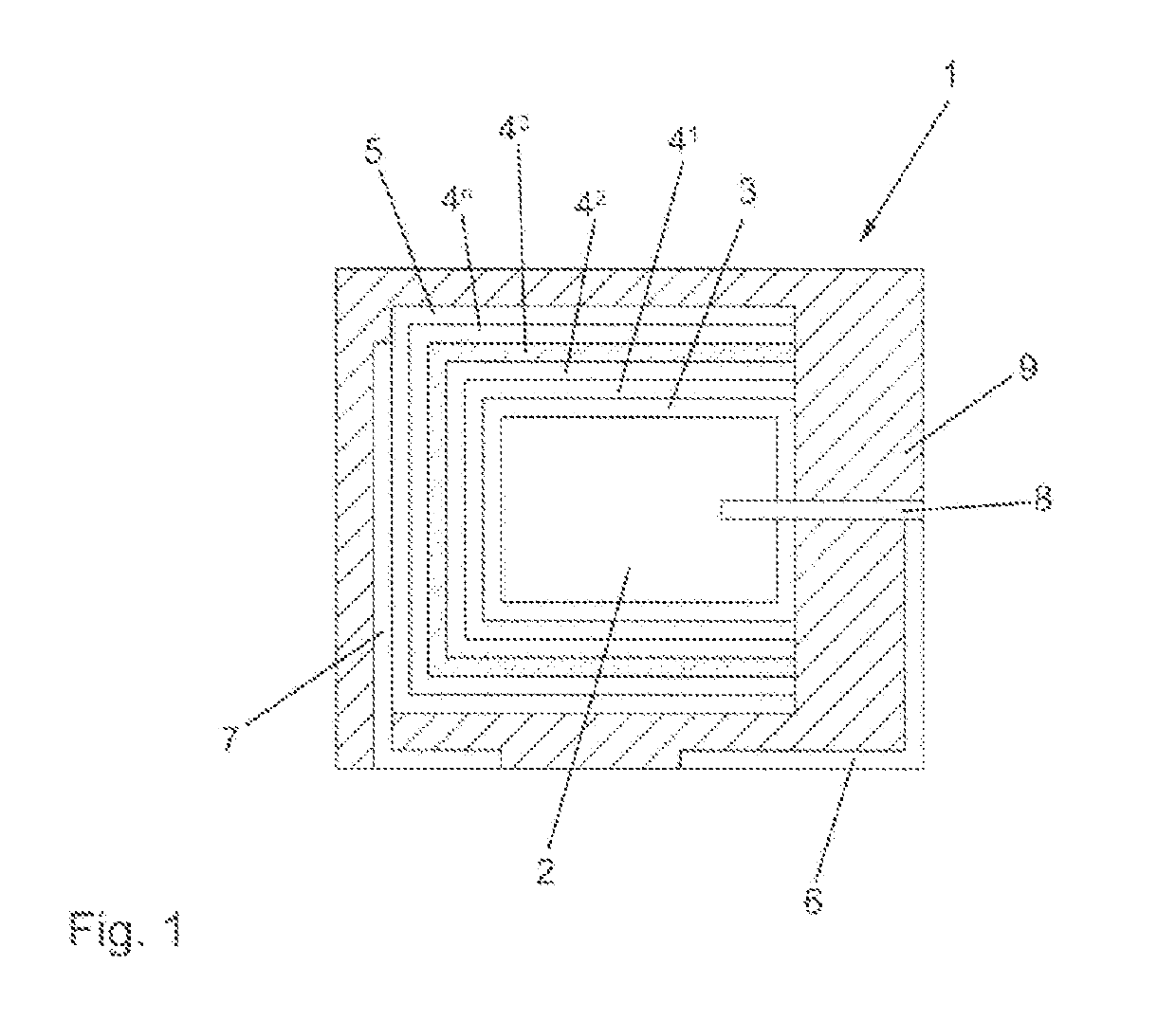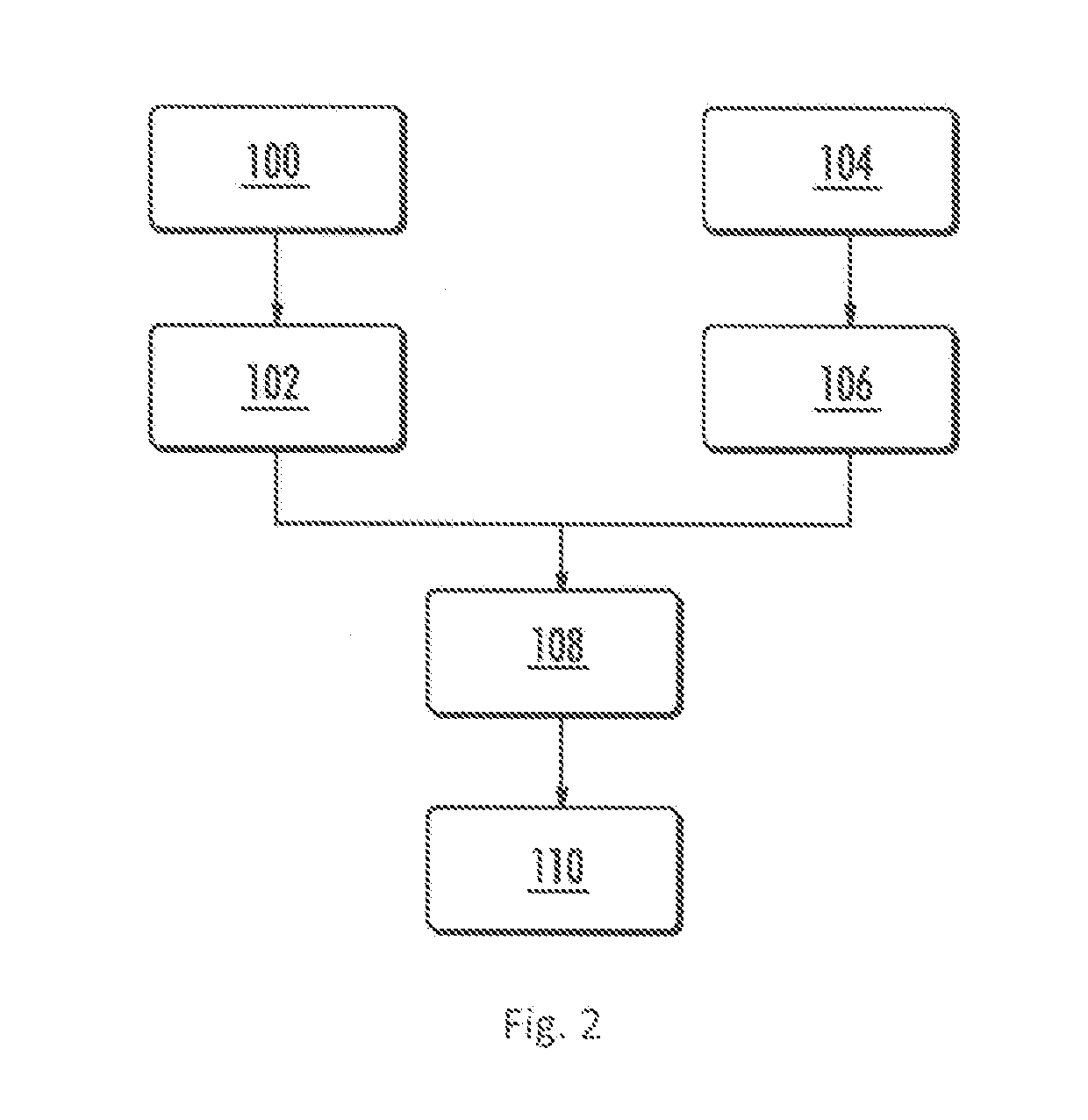Conductive Polymer Dispersion for Improved Reliability
a technology of conductive polymer and reliability, applied in the manufacture of electrically-conductive capacitors, conductors, electrically-conductive paints, etc., can solve the problems of reliability problems, high dc leakage current, and difficulty in covering the edges and corners of dielectrics, and achieve better corner and edge coverage in capacitors.
- Summary
- Abstract
- Description
- Claims
- Application Information
AI Technical Summary
Benefits of technology
Problems solved by technology
Method used
Image
Examples
example 1
[0088]Poly(4-styrenesulfonic acid-co-poly(ethylene glycol) methacrylate) sodium salt was synthesized. A 500 ml flask was initially charged with 33 ml deionized water as a solvent. After adding 8 g styrenesulfonic acid sodium salt, 2 g poly(ethylene glycol) methyl ether methacrylate (Mn 480) and 1 g ammonium persulfate, the mixture was saturated with nitrogen by means of a gas inlet tube. Nitrogen was passed through the mixture for 15 min. and during this time, the mixture was heated to 80° C. The flask was sealed with a rubber septum and the solution was allowed to polymerize for 16 hours. The resulting polyanion copolymer was acidified with dilute sulfuric acid and used directly for preparation of conducting polymer dispersion.
example 2
[0089]The conductive polymer dispersion was synthesized by high shear polymerization. 1740 g of DI water and 166 g of PSSA 30% (Alfa Aesar) were charged into a 4 L polyethylene bottle. The reaction solution was purged with nitrogen for 0.5-1 hr. The contents were mixed using a rotor-stator mixing system with perforated stator screen with a round hole diameter of 1.5 mm. Subsequently, 57 g of 1% ferric sulfate solution and 43 g of sodium persulfate were then added into the reaction mixture, followed by dropwise addition of 22.5 g of 3,4-ethylenedioxythiophene (EDOT) (Baytron M from Heraeus). The reaction mixture containing 3.56% solids of monomer and polyanion was sheared continuously with a shear speed at 4200 rpm for 24 hours. 600 g of Lewatit S108H and 600 g of Lewatit MP62WS ion exchange resins were added into the slurry and rolled at around 60 rpm overnight. The conductive polymer dispersion was separated from resins by filtration. The resulting poly(3,4-ethylenedioxythiophene) / ...
example 3
[0090]1740 g of DI water and 166 g of polyanion copolymer (30%) from Example 1 were charged into a 4 L polyethylene bottle. The reaction solution was purged with nitrogen for 0.5-1 hr. The contents were mixed using a rotor-stator mixing system with perforated stator screen with a round hole diameter of 1.5 mm. Subsequently, 57 g of 1% ferric sulfate solution and 43 g of sodium persulfate were then added into the reaction mixture, followed by dropwise addition of 22.5 g of 3,4-ethylenedioxythiophene (EDOT) (Baytron M from Heraeus). The reaction mixture containing 3.56% solids of monomer and polyanion was sheared continuously with a shear speed at 4200 rpm for 24 hours. 600 g of Lewatit S108H and 600 g of Lewatit MP62WS ion exchange resins were added into the slurry and rolled at around 60 rpm overnight. The conductive polymer dispersion was separated from resins by filtration. The resulting poly(3,4-ethylenedioxythiophene) / poly(4-styrenesulfonic acid-co-poly(ethylene glycol) methacry...
PUM
| Property | Measurement | Unit |
|---|---|---|
| wt % | aaaaa | aaaaa |
| wt % | aaaaa | aaaaa |
| particle diameter | aaaaa | aaaaa |
Abstract
Description
Claims
Application Information
 Login to View More
Login to View More - R&D
- Intellectual Property
- Life Sciences
- Materials
- Tech Scout
- Unparalleled Data Quality
- Higher Quality Content
- 60% Fewer Hallucinations
Browse by: Latest US Patents, China's latest patents, Technical Efficacy Thesaurus, Application Domain, Technology Topic, Popular Technical Reports.
© 2025 PatSnap. All rights reserved.Legal|Privacy policy|Modern Slavery Act Transparency Statement|Sitemap|About US| Contact US: help@patsnap.com



